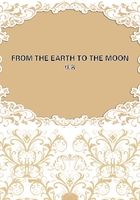
第11章
The immediate result of Barbicane's proposition was to place upon the orders of the day all the astronomical facts relative to the Queen of the Night. Everybody set to work to study assiduously.
One would have thought that the moon had just appeared for the first time, and that no one had ever before caught a glimpse of her in the heavens. The papers revived all the old anecdotes in which the "sun of the wolves" played a part; they recalled the influences which the ignorance of past ages ascribed to her; in short, all America was seized with selenomania, or had become moon-mad.
The scientific journals, for their part, dealt more especially with the questions which touched upon the enterprise of the Gun Club.
The letter of the Observatory of Cambridge was published by them, and commented upon with unreserved approval.
Until that time most people had been ignorant of the mode in which the distance which separates the moon from the earth is calculated.
They took advantage of this fact to explain to them that this distance was obtained by measuring the parallax of the moon.
The term parallax proving "caviare to the general," they further explained that it meant the angle formed by the inclination of two straight lines drawn from either extremity of the earth's radius to the moon. On doubts being expressed as to the correctness of this method, they immediately proved that not only was the mean distance 234,347 miles, but that astronomers could not possibly be in error in their estimate by more than seventy miles either way.
To those who were not familiar with the motions of the moon, they demonstrated that she possesses two distinct motions, the first being that of rotation upon her axis, the second being that of revolution round the earth, accomplishing both together in an equal period of time, that is to say, in twenty-seven and one-third days.
The motion of rotation is that which produces day and night on the surface of the moon; save that there is only one day and one night in the lunar month, each lasting three hundred and fifty-four and one-third hours. But, happily for her, the face turned toward the terrestrial globe is illuminated by it with an intensity equal to that of fourteen moons. As to the other face, always invisible to us, it has of necessity three hundred and fifty-four hours of absolute night, tempered only by that "pale glimmer which falls upon it from the stars."Some well-intentioned, but rather obstinate persons, could not at first comprehend how, if the moon displays invariably the same face to the earth during her revolution, she can describe one turn round herself. To such they answered, "Go into your dining-room, and walk round the table in such a way as to always keep your face turned toward the center; by the time you will have achieved one complete round you will have completed one turn around yourself, since your eye will have traversed successively every point of the room. Well, then, the room is the heavens, the table is the earth, and the moon is yourself."And they would go away delighted.
So, then the moon displays invariably the same face to the earth; nevertheless, to be quite exact, it is necessary to add that, in consequence of certain fluctuations of north and south, and of west and east, termed her libration, she permits rather more than half, that is to say, five-sevenths, to be seen.
As soon as the ignoramuses came to understand as much as the director of the observatory himself knew, they began to worry themselves regarding her revolution round the earth, whereupon twenty scientific reviews immediately came to the rescue.